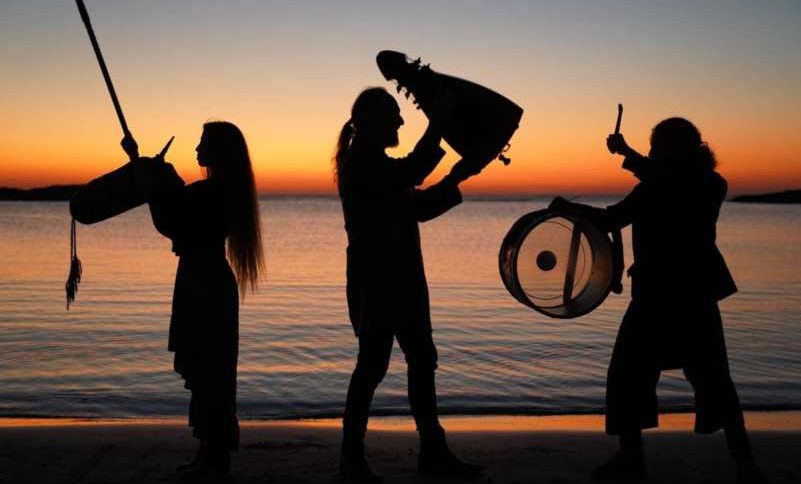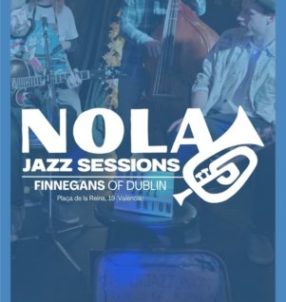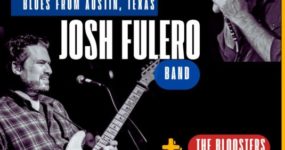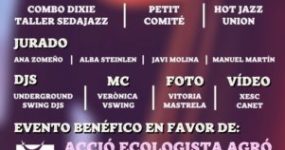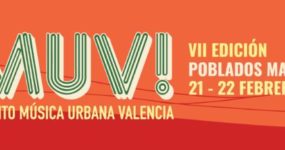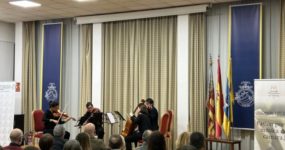Efrén Lopez really is a musical phenomenon. Born in a working-class barrio of Valencia in 1972, he left school with no qualifications due “to a less than perfect relationship with authority”.
He got involved in music as a sound technician in studios and as a session musician, which involved a tour of Colombia and Peru as an electric guitarist where he first bought the first of his many exotic, acoustic instruments that he is now world famous for playing. These include the Mandolin, Sitar, Oud, Hurdy-gurdy, Medieval lute, Viola, Tamboura and many more! He is fascinated with Mediterranean and medieval music as well as the sound of instruments from lands as far as away as India and Afghanistan. Jimmy Page and Davy Graham would surely have approved!
Lopez is a composer and virtuoso musician who has played in prestigious concert halls all over the world in the U.S.A., China, Holland, Germany, Morocco, Greece, Norway, Poland, France, Turkey and more with other masters in their musical fields. He has produced, composed, & collaborated on a huge number of albums, ranging from traditional Valencian music to Renaissance, Greek & Sephardic music.
Could you take through the tracks on your solo album, ‘El Fill del Llop’ (‘The Son of the Wolf’)?
Kurtoglu Zeybegi
I wrote this piece to express my gratitude and pay homage to the various masters with whom I was fortunate to study the Turkish bağlama lute. I was challenged to write a Zeybek “so slow that each bar lasts a week”. This heavy dance of Turkish origin has always fascinated me.
Plaerdemavida
“Pleasure-of-my-life” is the name of a character in ‘Tirant lo Blanch’, a Valencian medieval novel by Joanot Martorell. When I have a daughter, this will be her name, with soundtrack and all. It was recorded in an isolated place in Fuente la Reina (Castellon region). Some days, the house was surrounded by snow and there was no electricity. Fortunately, there was an ample storeroom to enable me to survive in case of nuclear war or a zombie attack.
Como al pie del suplico estuve
Foreign musicians have often asked me how come I do not play flamenco music, given that I was born in Spain and I am half Andalusian. Apart from not liking this kind of cliché, I’ve never known what to say. I have had a few collaborations with flamenco artists; yet I have never gone deep enough into its palos to be able to claim that I “play flamenco music.” I was contacted by Raul Micó, a lively cantaor from Villena (Valencia) regarding the possibility of collaboration. Even before I heard him sing, I liked his open mind, initiative and freshness. When I had the opportunity to listen to his voice, I was highly impressed by its strength and precision.
O gios tou lykou
Kapetanianá is a village in Crete, situated at the foot of a mound which, seen from certain points, clearly evokes the profile of a sleeping man. It is full of legends and old pagan traditions that Christianity has adapted for its sake. The place is isolated from the region’s urban centres. It was only in the 1970s that people started building roads here, enabling communication with the outside world. This was when the first foreign tourists arrived in the village…tall, blond, long-haired hippies with whom clear conversation was not possible. They looked so different from the villagers that the latter wondered if they were human. Gradually, the understandable initial mistrust eased off and gave way to a growing sympathy, probably because the foreigners started to learn the basic of the Greek language with their Nordic accents. Local women would go out of their way in competing to prepare hot dishes for the hippy house and each family came to adopt their own hippy as though it was some sort of pet:
“ Giorgi, can you do me a favour and feed my tourist for a few days, I have some errands to run in town.”
Aralik
One winter when I was visiting Istanbul. Meira Segal (a ney flute musician) asked me to help her with ‘homework’ for her Makam class (Turkish Ottoman modal system). We wrote this piece together. In Turkish, Aralik means December, which is the month we wrote this piece but it also means an interlude or space between two objects.
Asbe sangi
This piece is dedicated to Mazdak Ferydooni, an Iranian luthier who lives in Greece and has built the Kurdish tanbur lute that I have used to write it. Most of the times when I create a new piece, inspiration comes from the sound itself and the places where the special tone and character of each instrument take me. Mazdak, you will know why I have called it “stone horse” in Farsi.
Iria
I learnt this song from the late María Lafitte. To enrich the melodic line, we created a thick layer of vocal harmonies and shofars, the Jewish ceremonial horns. The lyrics of this song, which has become like a hymn over time, refers to a cryptic from whose coded messages are about the extermination of the Cathar people by the crusaders sent by Rome in the 12th century. In the chorus one can hear the cry of alarm that the Cathars used: A…E…I… O…U!!!
Vallsabollera
Simone invited me to her ‘house’ in the French Cerdagne. Actually, the brave and stubborn Simone lives alone in a Cathar castle inherited from her family and located in an idyllic setting towering above a beautiful valley. As though this was not enough, the site is called Valcebollère, the Onion Valley. Indeed, a type of wild onion grows there, making it a paradise for all those addicted to these bulbs, as is my case. Simone is a great music lover and she regularly organizes Medieval music concerts in one of the rooms of the castle. To thank her for her hospitality, I have written this piece inspired by the memory of those splendid landscapes.
Bourrées de la Carrasca del Vaca
This is a French dance on the Hurdy-gurdy…a powerful instrument full of possibilities and headaches for those, like me, who are addicted to its sound. There is a curious history behind the title of this piece. I decided to give this composition the name of my mother’s Valencian village. Then I realized that my father might resent the absence of his native village near Jaen. Aiming to find a Solomonic solution to a possible Valencian-Andalusian conflict, I used a computer programme that could locate the exact geographical point halfway between the two locations on earth. I therefore entered the addresses of where each of my parents was born and fell upon ‘The Oak of the Cow’ a monumental old tree in the Albacete region. It was a perfect name for my new composition, a name that would not jeopardize the harmony of the López-Sanz family.
Azinhaga
I was asked to write a theme for an international music festival in Portugal based on a writer I greatly admired, José Saramago, the first Portuguese to be awarded for the Nobel Prize for Literature. I chose the name of the song as the village of his birth and tried to blend musical elements from my country with other “Portuguese” sounds using a Valencian “guitarro” a viola braguesa and a cavaquinho, among other instruments.
Abracadabra
The magic word of Aramean origin means “to create, to give shape with a word”. I believe this is what many of us musicians and artists in general are seeking: to give reality to ideas, by means of sound in my case. It is obvious that the power of music is huge, and if we cannot appreciate it these days it may be due to saturation, what with the bad melodies and meaningless sounds we are exposed to daily and unwittingly, in transport & pubic buildings or through audiovisual media…
Interview by 24/7 Valencia team
More information on www.efrenlopez.net
www.efrenlopez.net/web_angles/angbio.htm
Facebook Efrén López Musica


